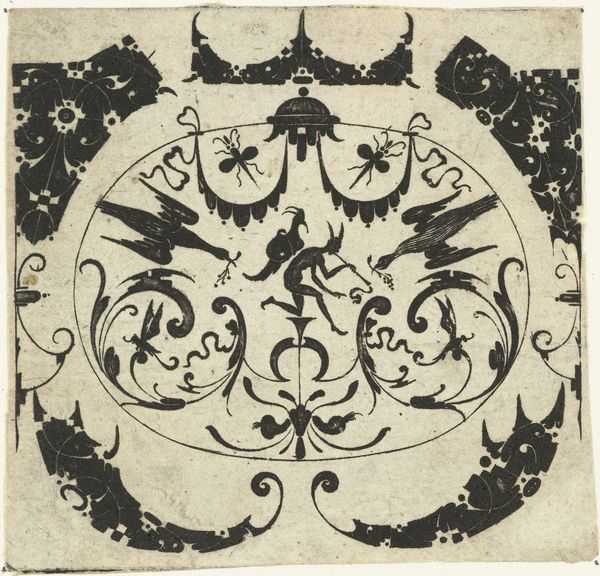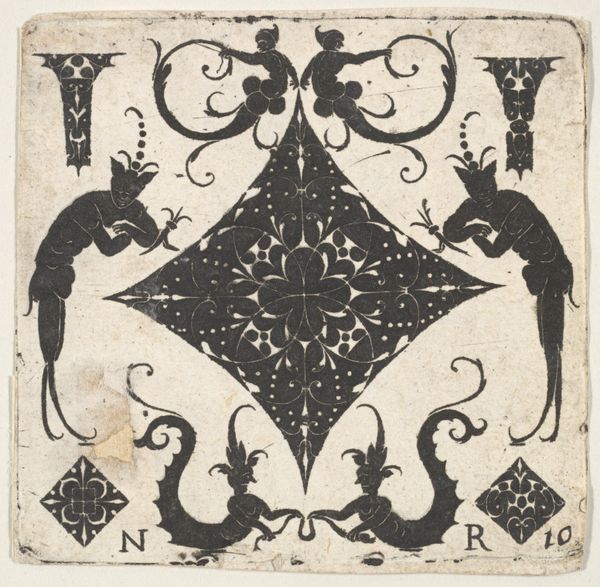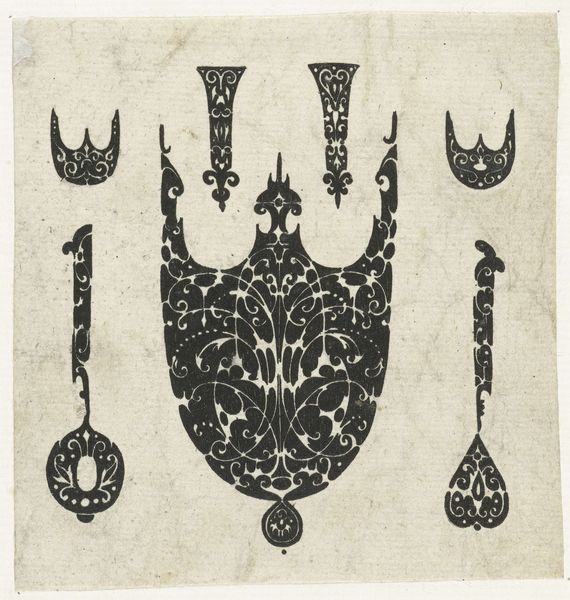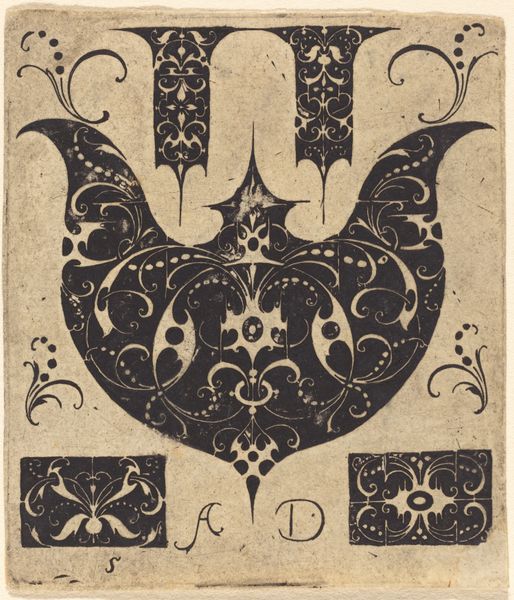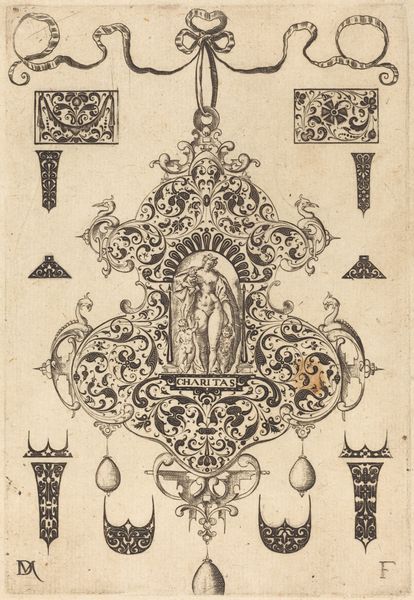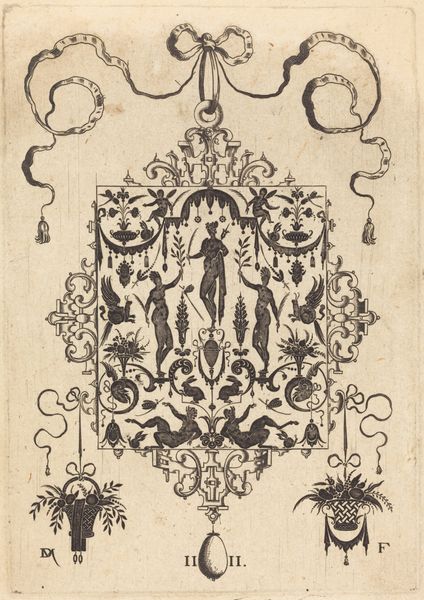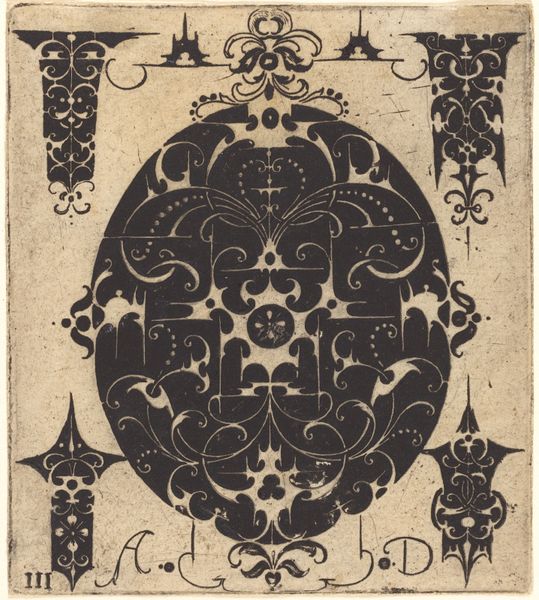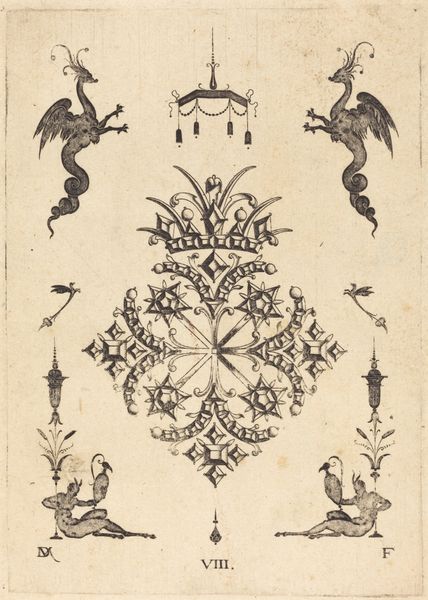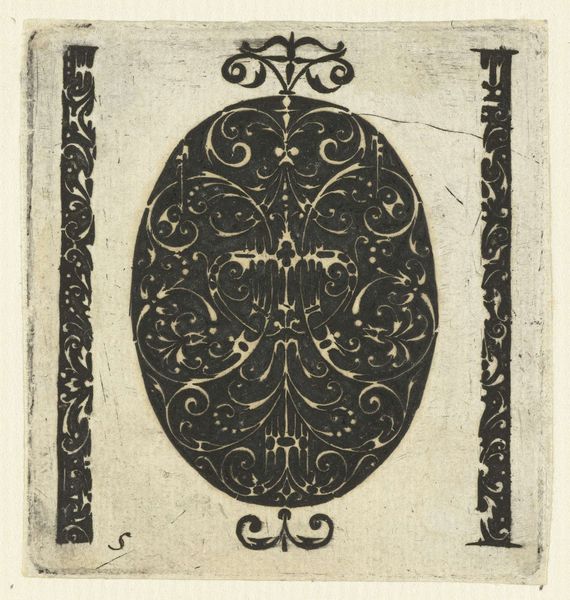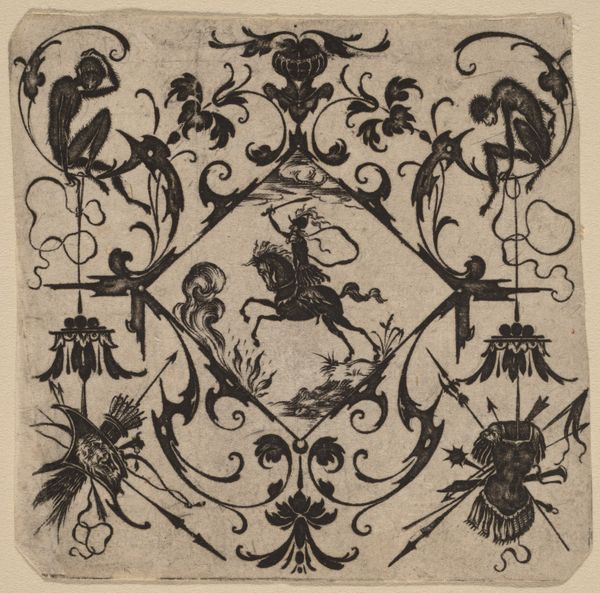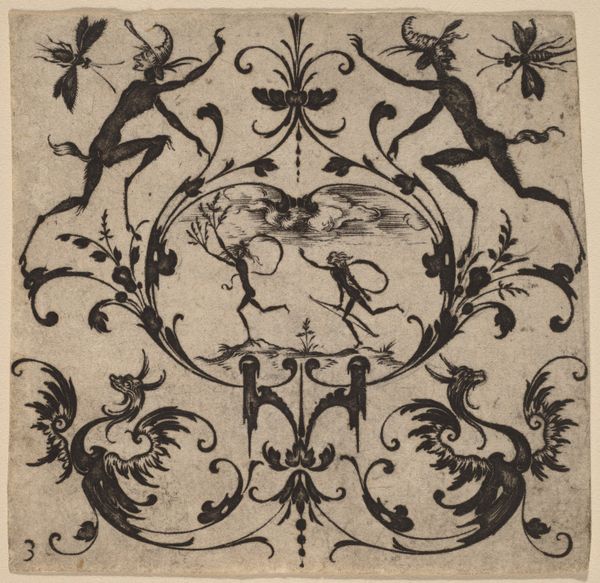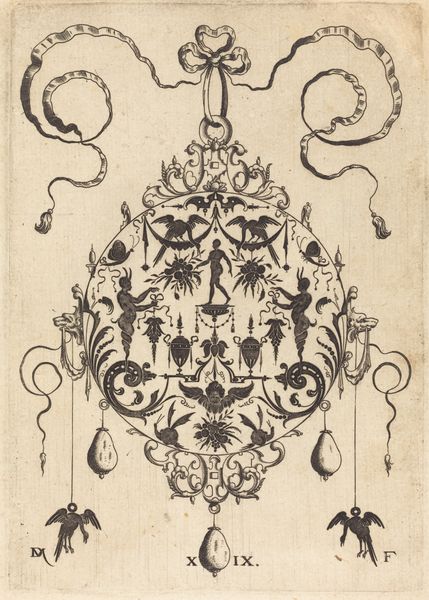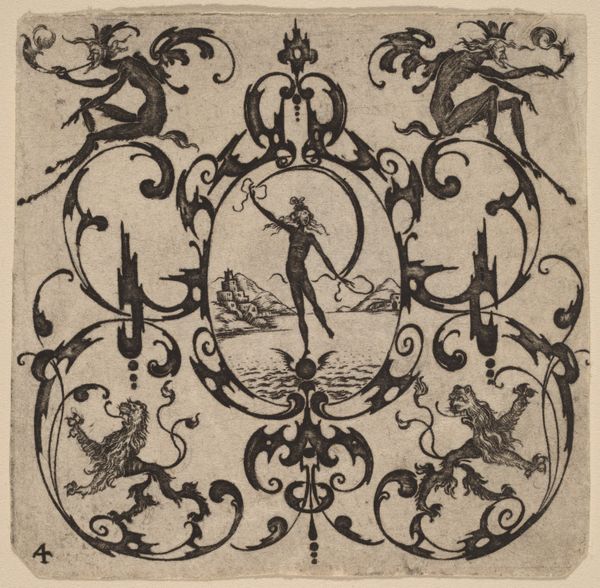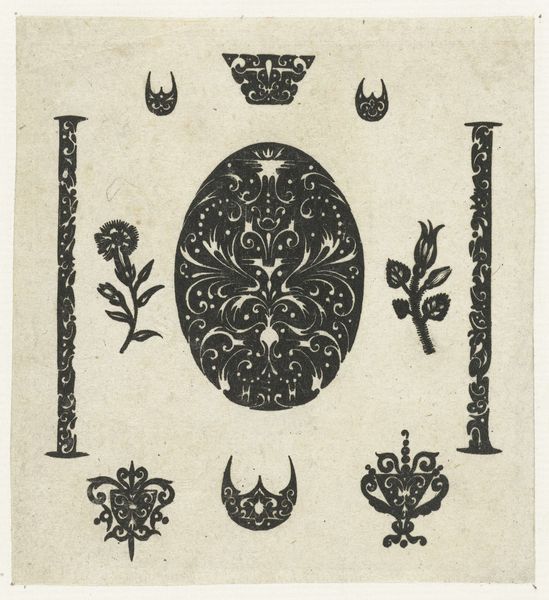
Lunar-shaped Ring Bezel and Grotesque Figures 1620 - 1630
0:00
0:00
drawing, ornament, print, etching, intaglio, engraving
#
drawing
#
ornament
#
medieval
# print
#
etching
#
intaglio
#
figuration
#
11_renaissance
#
men
#
line
#
sketchbook drawing
#
engraving
Dimensions: Plate: 2 9/16 x 2 3/4 in. (6.5 x 7 cm) Sheet: 4 x 5 3/16 in. (10.2 x 13.2 cm)
Copyright: Public Domain
Curator: Looking at "Lunar-shaped Ring Bezel and Grotesque Figures" by Noël Rouillard, dating back to 1620-1630 and currently housed at The Met, I'm struck by its intricate design. It is rendered using etching and engraving. Editor: My immediate reaction is how unsettling yet captivating the piece is. There is an almost dreamlike quality to it, a blending of the beautiful and the grotesque, with a very defined stylistic element around these figures. Curator: Indeed. Rouillard's work often appeared in print form, circulating design ideas during the Renaissance and Baroque periods. Ornamental prints like this one played a crucial role in disseminating visual motifs, influencing various crafts and decorative arts. Its publication history speaks to a wider artistic conversation. Editor: Considering today’s conversation around body autonomy and freedom, what statements can be made about these androgynous figures depicted as both beast and human? Are we seeing a commentary on gender and its fluid state or is it simply decorative? I am particularly drawn to the winged demon atop the bezel, straddling a space between powerful and vulnerable. Curator: That’s a valid interpretation. During this era, there were often multiple audiences. We could view the figures' hybridity not as purely decorative but as representing a symbolic disruption of natural order, a commentary on societal anxieties perhaps reflected through the fashion and societal pressures of the time. Editor: Exactly, considering who had the ability to purchase and utilize these drawings as decoration or art pieces at this time, the social and political context could possibly change the artistic perception and reception to viewers both then and now. Curator: Well put. I’ve always admired the role of such prints in art history. Editor: It makes you wonder about how the decorative transforms the grotesque, or perhaps reflects anxieties back onto the societal eye.
Comments
No comments
Be the first to comment and join the conversation on the ultimate creative platform.
